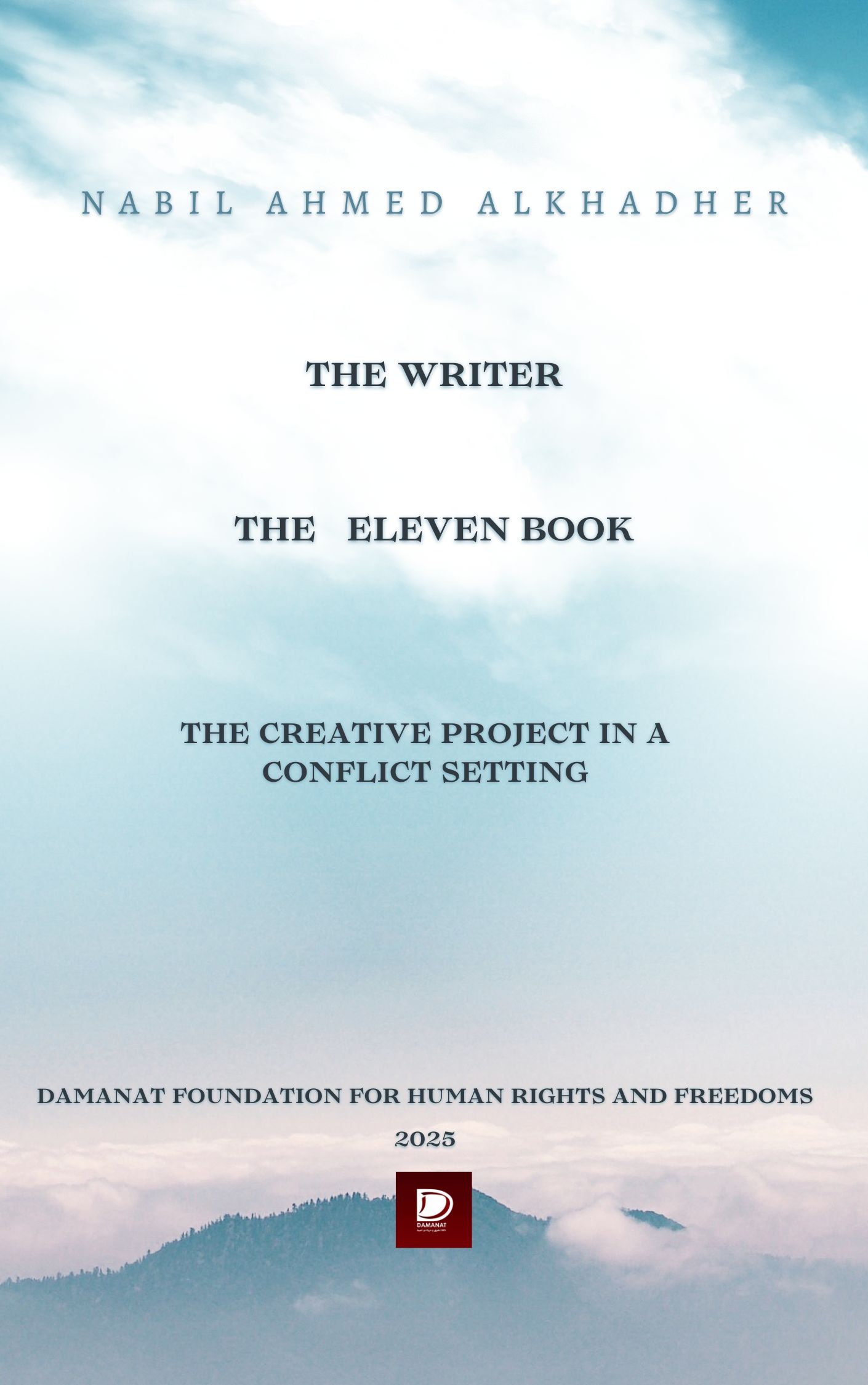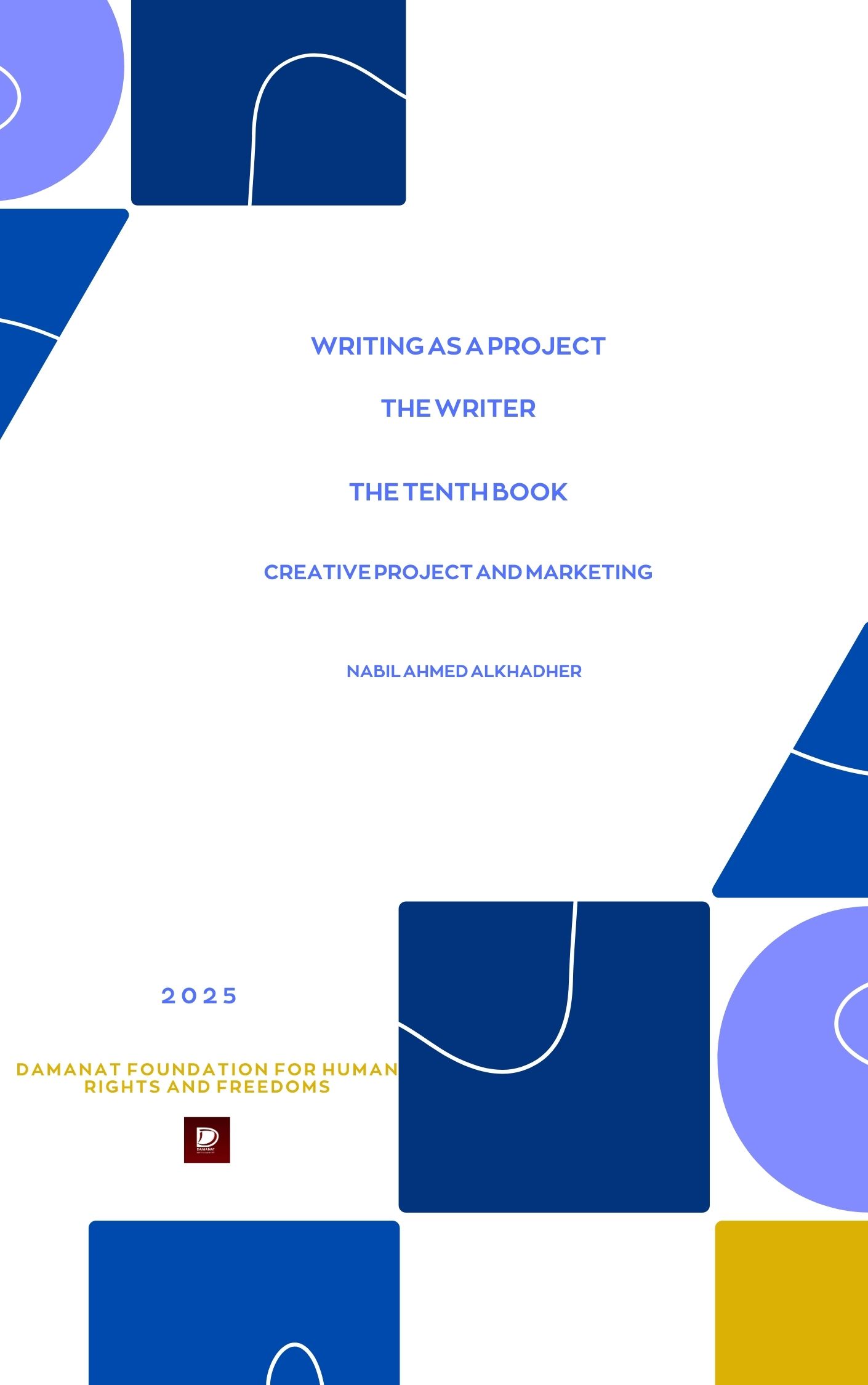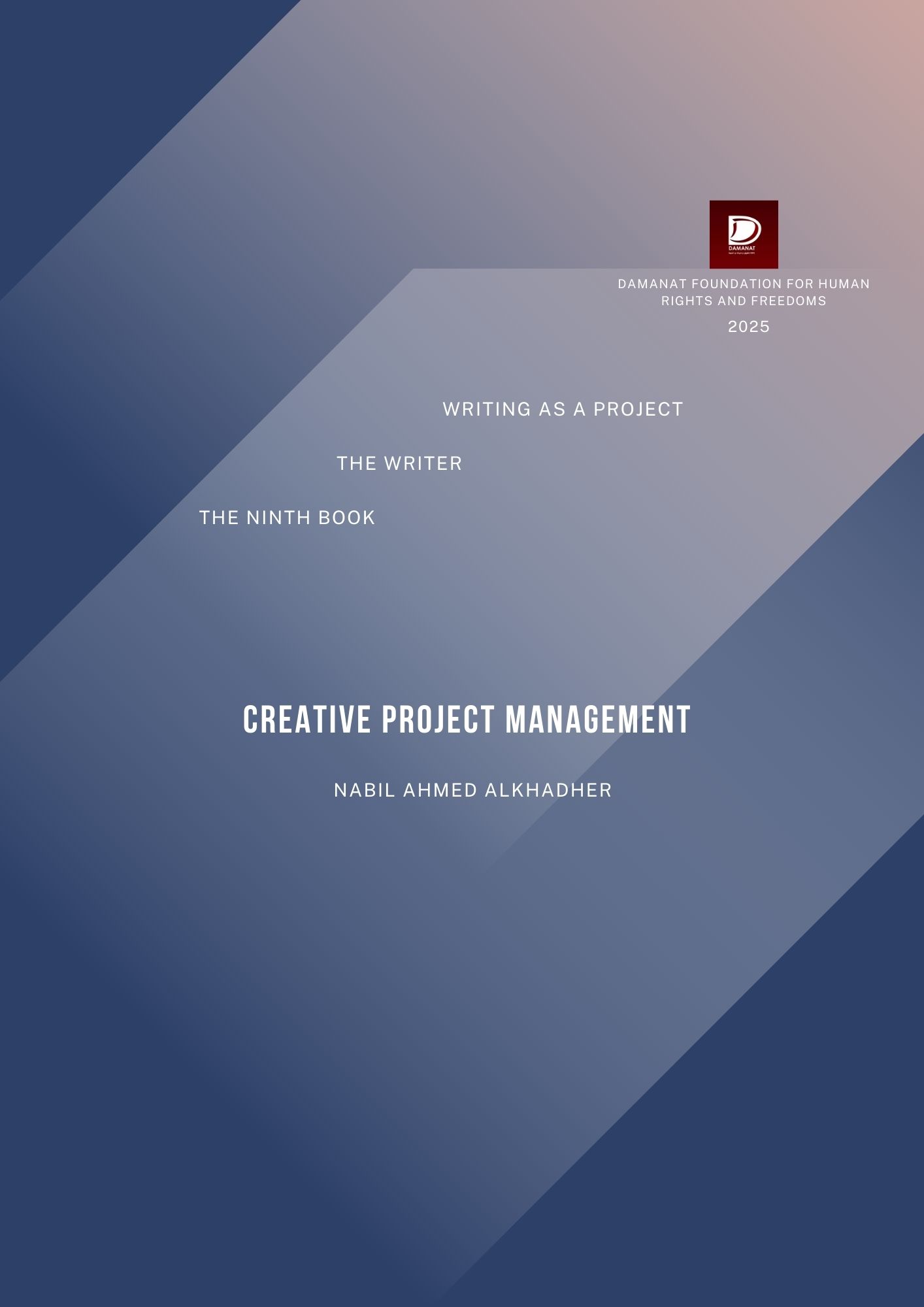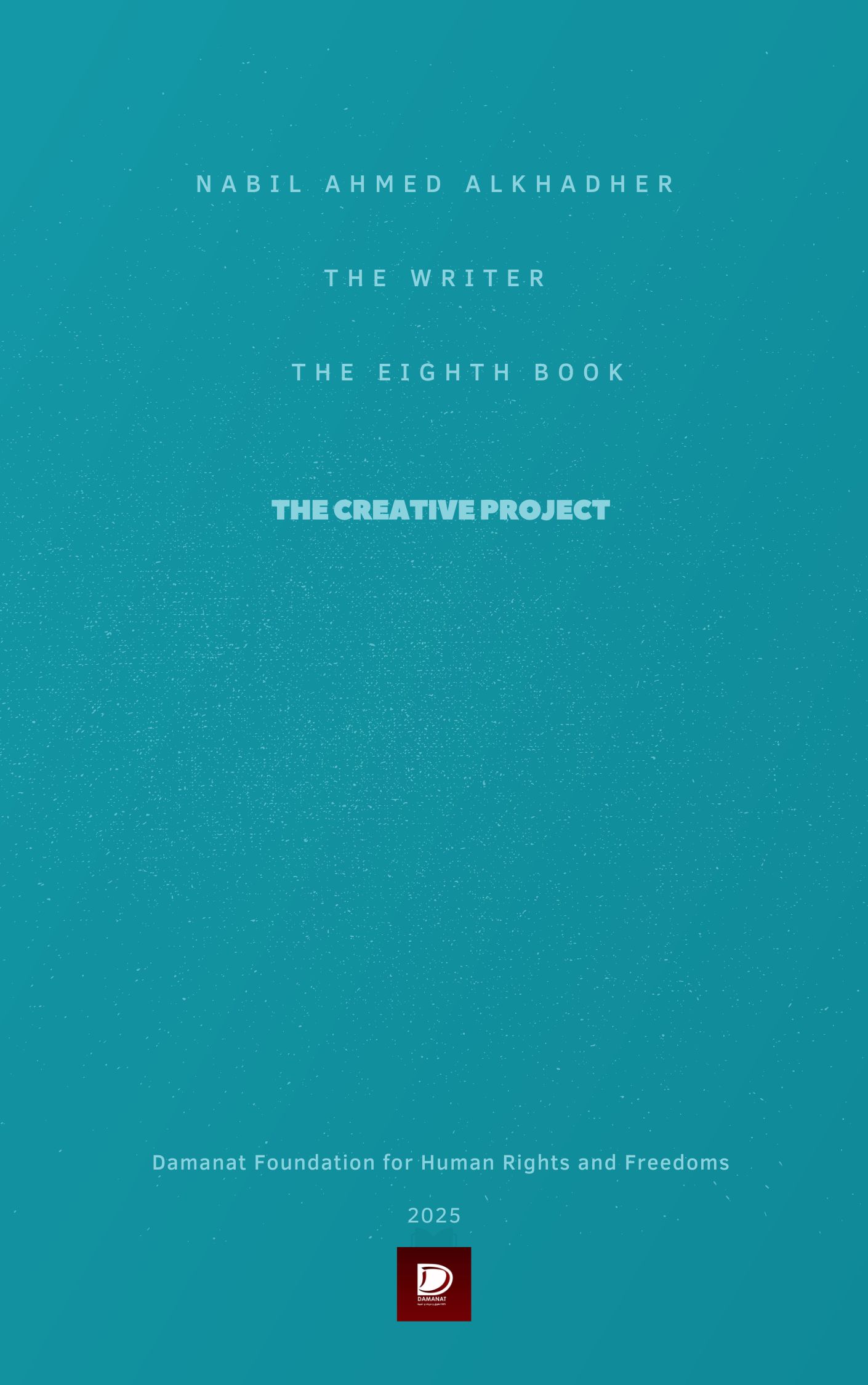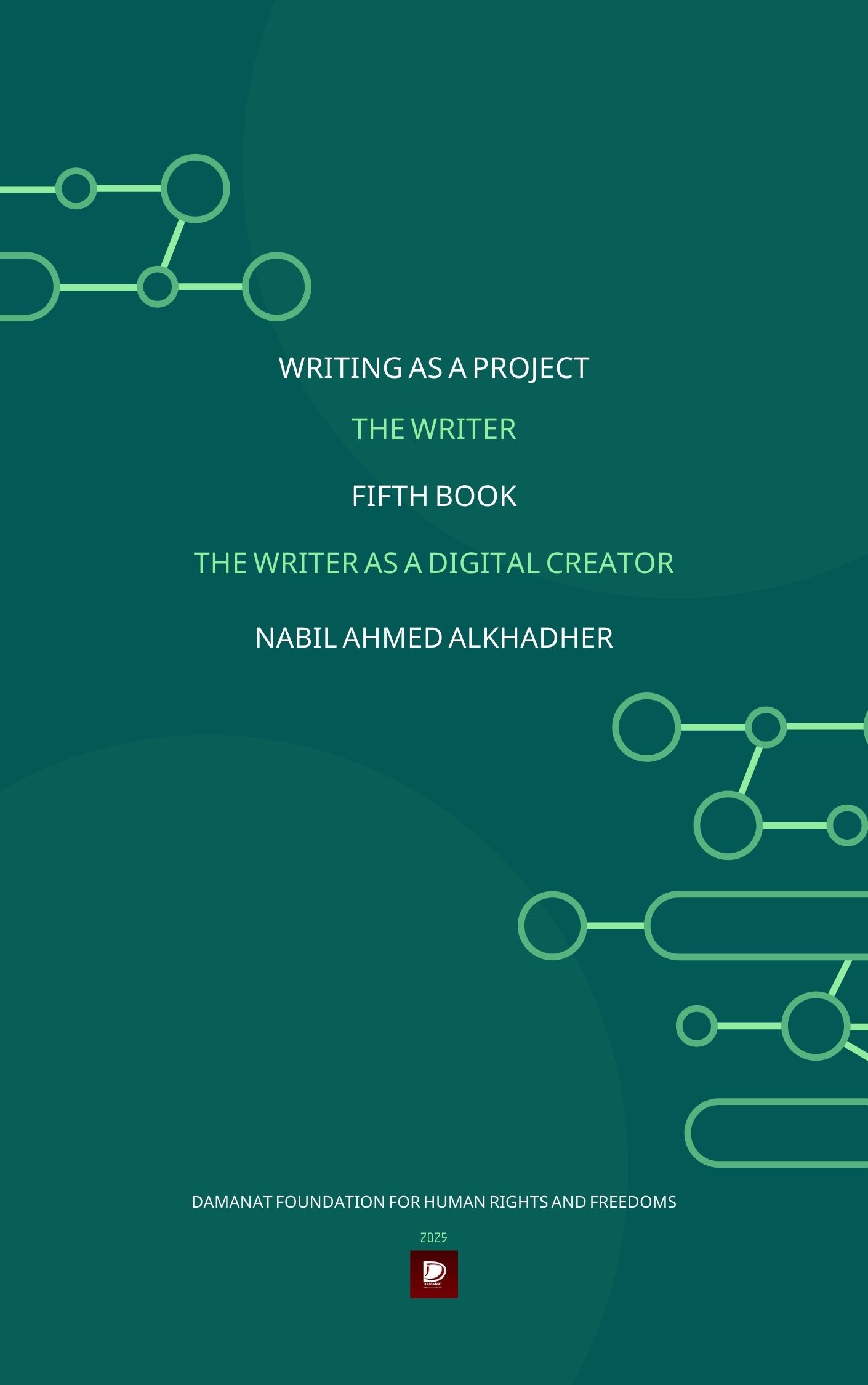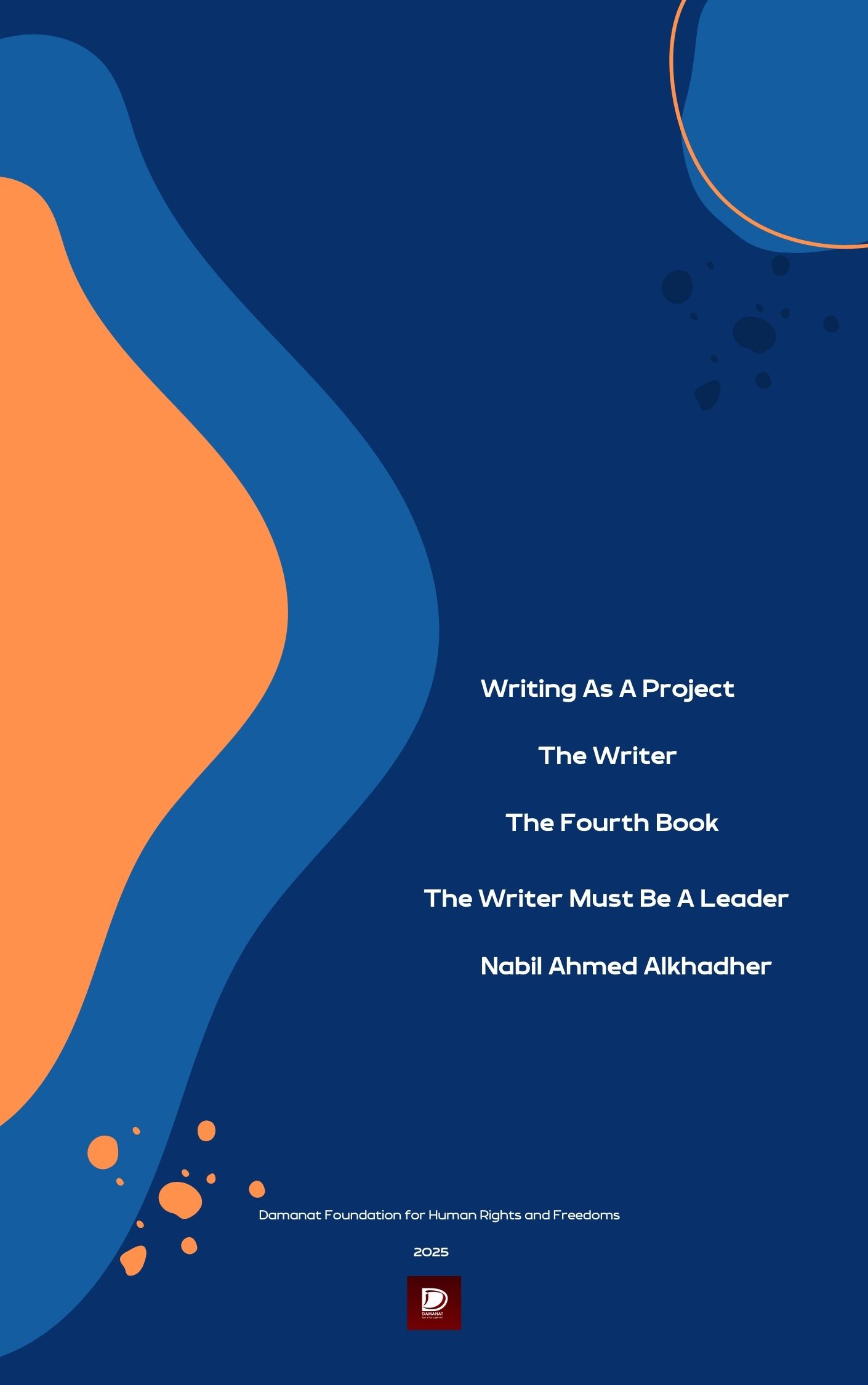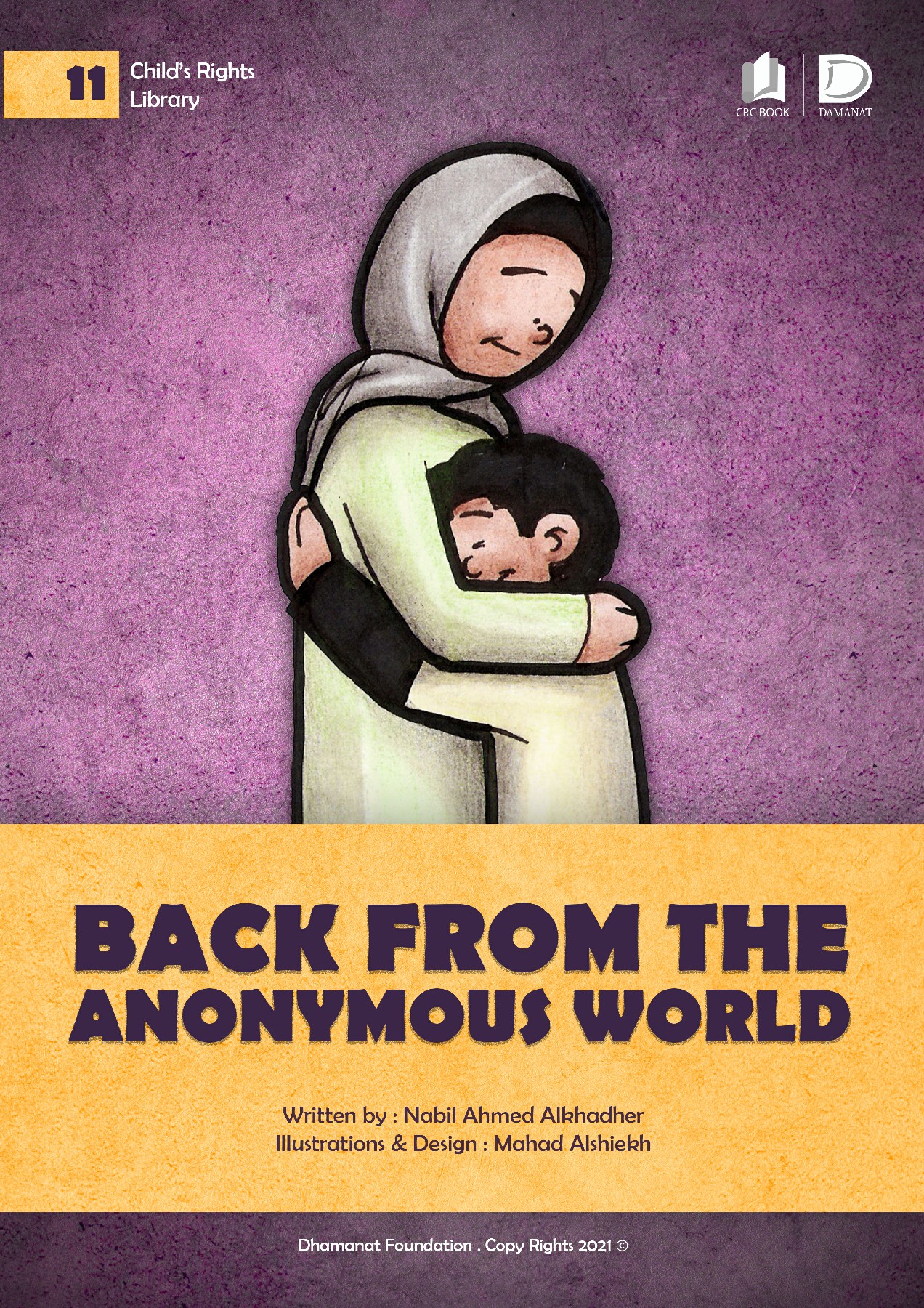Mon,Dec 15 ,2025
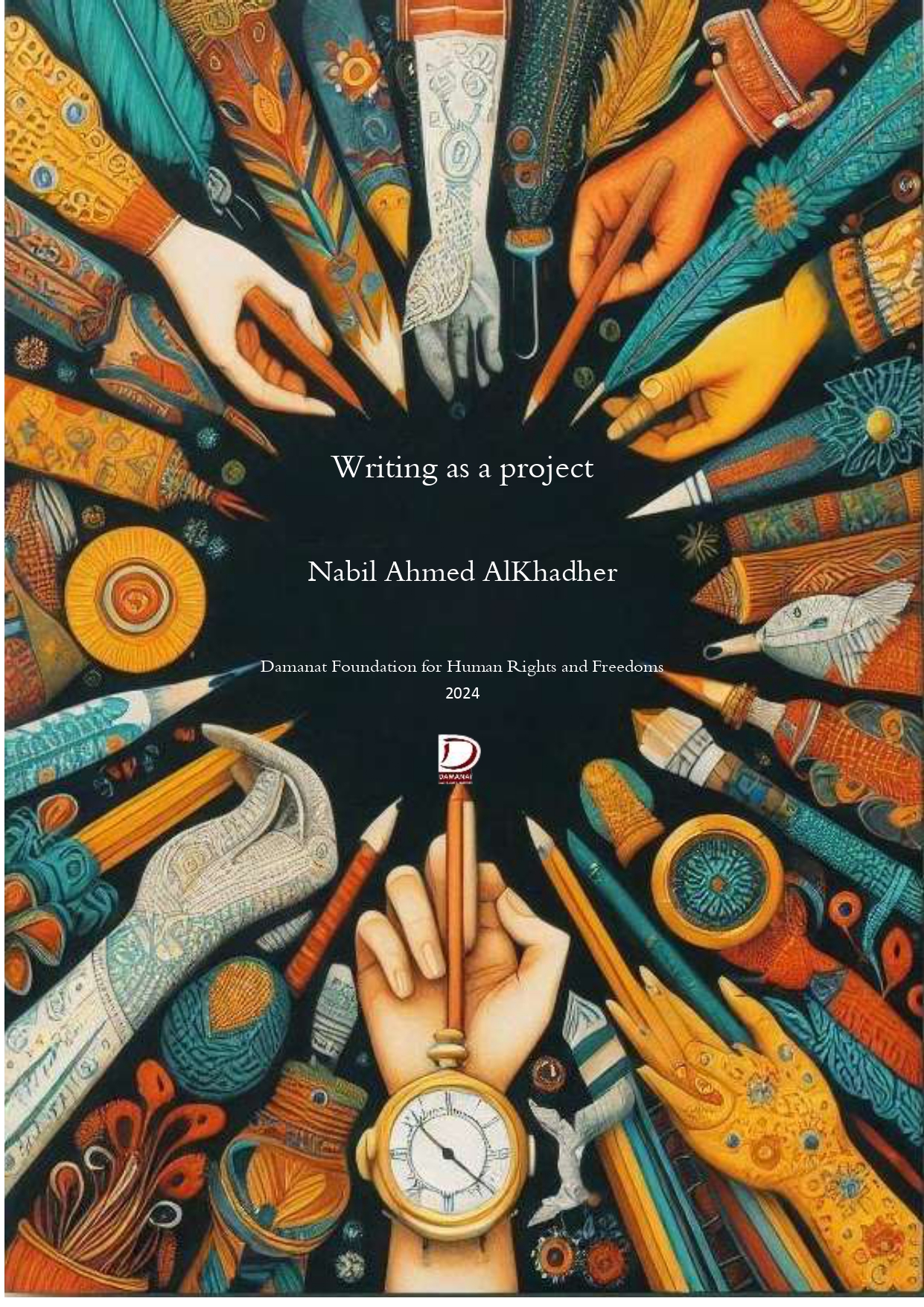
Writing as a project is a text that attempts to present writing as a planned activity, not as an emotional activity resulting from a love experience that the writer lives without thinking about success in it, or considering it a form of psychological release for some writers and then neglecting it. It is also not an honest experience that the writer undertakes to share with readers a bitter love experience he went through with his beloved, or an extended journey of sadness that the writer lived and wanted to pour out on paper only to find in the end that he did not plan to publish it or work to promote it and network for it, only to find himself in the end printing it at his own expense without planning to return what he spent, and then publishing it to friends without planning to benefit from their reading of the text and how to benefit from their reading in subsequent texts, and throwing the remaining copies in one of the floors of his wardrobe without planning to sell them to recover even a small part of the losses he incurred from writing, printing, and publishing.
This booklet will attempt to borrow some vocabulary and works related to the writer's creative work, and also borrow from the vocabulary of development management and implementation, and mix all of this vocabulary in one text that presents a simplified idea for any writer who wants to become like the professionals. I do not mean here the activity of writing only, but I mean the writing project from it being a simple idea in the writer's mind until it became a book with mass, weight and content, which if planned intelligently and the plans are implemented in a real, correct and comprehensive manner, the writer will become successful and the book will become famous and sold on the shelves of libraries and bookstores on the Internet.
Writing is a project like any other, requiring planning, funding, implementation, and the identification of the project's target audience, its target group, and the geographic area of the writing's consumers, including readers, followers, and interested parties. We will elaborate on all these terms in the following pages until we reach the final plan for success.
Writing as a project is a planned activity with inputs, outputs, research, goals and objectives, beneficiary groups and a geographical area, and monitoring, evaluation, and impact measurement activities. Every writer must approach each text he produces as a cultural manager of his creative product, perhaps more than as a creative and inspiring writer.
discusses the qualities of a successful writer, such as being creative, challenging, experienced, talented, brave, wise, methodical, enthusiastic, decision-making, professional, sensitive, confident, cooperative, progressive, precise, unique, competitive, successful, patient, free, hardworking, simple, objective, realistic, rational, innovative, humble, self-sufficient, honest, controlling, clear, flexible, independent, steadfast, fluid, futuristic, reader, adventurer, analyst, initiator, capable, good listener, interactive, positive, specialized, quality assured, master of his position, thinker, open-minded, healthy, passionate, ambitious, prepared, disciplined, understanding, dreamy, healthy, focused, specialized, participating, innovative, secure, happy, skeptical, skilled, productive, idea-driven, uniquely linguistic, and experienced.
In the same vein, the first chapter talks about the writer who must have knowledge of his creative environment, be able to continue, enhance his strengths, and address his weaknesses, be able to visualize creatively, be able to identify the gains from his creative project, believe that experiences help him grow, become professional and experienced, be focused on activities and carry them out at the lowest costs, be able to act in a constructive manner, be able to communicate positively, grow and fruitfully, be aware of the diversity of tastes, understand differences, be aware of the reasons for rejection and address them, and be able to present a complete idea.
The first chapter discusses that the writer must understand values, judgments, people, situations, laws, regulations, and societal norms, and realize how to invest in his creative environment, enjoy the presence of a strong and growing literary industry in his creative environment, never stop asking questions, welcome all different points of view, realize that every opinion is important, know where to draw its sources, realize that he is not the omniscient, cooperate with specialists in various creative arts, respect the opinions and decisions of others, promote diversity , and foster uniqueness. The writer must have broad interests, aspirations, experiences, information, relationships, and readings, and realize that he is the master of the situation and able to access the resources he needs. The writer must obtain training opportunities or fellowships in his creative field, and the writer must join creative networks, alliances, and non-governmental organizations specialized in creativity. He must focus on his effective digital activity on the Internet, not be afraid of new things, differences, or variations, and be able to make his decisions on the personal, family, social, or creative level, and be able to build a positive, creative, successful, growing, and influential personality in the digital world. He must be non-selective, accept criticism, have critical skills, and have a goal. A message that realizes that his success is a win-win for everyone and is cautious within his creative project.
In the field of management, the second chapter, entitled “The Capabilities of a Successful Writer,” discusses the writer’s ability to manage adaptation, negotiation, balance, stress management, anger management, tolerance, conflict management, self-management, team management, negative emotions, change management, evaluation management, emotional management, risk management, and content quality management. The writer must also be able to manage participation, monitoring, analysis, and management of his creative project, manage priorities, information management, motivation management, anxiety management, research management, pressure and stress management, and be able to solve problems, brainstorm, and manage difficulties and obstacles as an essential part of the success of his creative project. He must also be able to manage planning and time management, manage and achieve expectations, manage relationships, and manage the reasons that hinder his creative path. The writer must have the ability to understand and manage the audience.
The third chapter, titled “Skills of a Successful Writer,” discusses the importance of a writer being creative, understanding, knowledgeable, and thoughtful, capable of gaining inspiration, generating ideas and concepts, possessing their own voice, possessing diverse story ideas, experiencing all its details, being able to build a story, crafting a story scene, creating and managing conflict in a text, crafting a plot, designing creative mind maps, building good characters, writing good dialogue, being interested in their own creative text, being able to write suspense, excitement, and imagination, and being able to develop the plot and talk. The writer should be able to deal with writing types such as mythology, history, horror, family, comedy, hero, and villain, and innovate their own solutions that contribute to their success, such as self-printing, self-distribution, and self-publishing, and be willing to avoid pitfalls, capable of good presentation, adhere to deadlines, and possess professional marketing skills.
The fourth chapter, which discusses the writer as a creative leader, will discuss the writer as a creative leader and the characteristics and details of leadership, especially within the creative writer project. In the fifth chapter, we will talk about the writer as a digital creator and we will discuss how the creator benefits from the Internet in the field of publishing, public relations, knowledge enrichment, digital marketing, access and direct interaction with readers, archiving and making creativity available, and global access and protection.
The book discusses how creative stakeholders can benefit from their creative experience on the Internet through peers, governmental cultural institutions, state institutions, publishing houses, institutions sponsoring creative competitions, local civil society institutions, regional and international institutions, media outlets, film, radio or drama production companies, the private sector and the local community. The book also discusses ways for smart creatives to invest in the Internet through public and open international training sites, semi-private sites, private sites, regional sites, specialized sites, regional and international university sites, commercial sites and temporary training sites. The book discusses the obstacles facing creatives in benefiting from the Internet, such as infrastructure, geographical differences, gender differences, freedom of expression, the digital gap, resource disparities, social obstacles, language obstacles and personal capabilities. The book will discuss the creative person as a digital creative person and whether there are activities that contribute to the success of the creative person by benefiting from the digital environment, such as spreading creativity digitally, societal awareness of the importance of creativity, digital mobilization of creativity, enhancing the positivity and participation of the individual receiving creativity, enhancing digital effectiveness, localizing technology, bridging the digital gap, ensuring the good use of the digital environment in the service of creativity, enhancing the digital skills of the creative person, participating in marketing creativity, measuring creativity digitally and on In the same vein, the book discusses the role of the digital environment in promoting and increasing the influence of creative people on social networks such as Facebook, Twitter, blogs, websites, Internet channels and radio stations, and ways to activate the role of the digital environment in protecting creative people and digital security.
In the sixth chapter, entitled “The Project,” the book will discuss the importance of the project’s existence in the first place, its comprehensive picture, its good, comprehensive, and achievable vision, its clear, easy-to-understand, accessible, and implementable message, its positive values, the importance of the desired goals, the presence of positive project partnerships, the presence of committed leadership, the presence of a project action plan, the ability to identify creative project priorities, analyze the current situation, the effectiveness of project workers, obtain funds, understand and apply planning well in the project, ensure good implementation of plans, that planning translates the project’s mission, ensure good analysis of the project, ensure good design of project plans, the ability to share project plans, ensure that planning contains clear frameworks, comprehensive planning for all project details, ensure that planning translates the project’s mission, vision, and message, know the strengths and weaknesses of the project’s plans, ensure the presence of indicators for achieving the project plan’s objectives, the presence of the project’s understanding of the environment surrounding the planning process, and the project’s ability to enhance collective participation in planning. Chapter Six focuses on ensuring sound project management, such as managing human capacity, financial capacity, institutional capacity, operations management, control, and positive and effective project communication management, managing delegation, finance, information, and partnerships, managing positive project ethics and practices, managing meetings and workshops, managing communication, negotiation, competition, balance, stress, anger management, tolerance, conflict, negative feelings, change management, emotions, quality management, participation, monitoring, and analysis, creative project management, managing priorities, information, motivation, and anxiety, research management, pressure and stress management, brainstorming, managing difficulties and obstacles, planning management, managing expectations, relationships, and audience management, and ensuring positive project practices, such as transparency, information availability, project accountability, caring for the work team, sustainability, quality, promoting participation, smooth termination, security, safety, idea generation, and project flexibility. The book focuses on the project and finance, determining whether the project is capable of assessing needs and physical assets, identifying the needs and assets necessary for implementation, being able to handle funds rationally, implementing good financial management for all financial procedures, and ensuring that the project is capable of designing good budgets, subjecting budgets to regulatory standards, ensuring financial transparency, ensuring team participation in setting and monitoring the budget, subjecting the budget to a timetable, ensuring the budget is flexible, sound, and credible, and that the project has professional financial management, the budget is compliant with financial and accounting laws and regulations, and the financial management is compliant with procedures that ensure the quality of financial operations, ensuring a good and free flow of financial information, anticipating financial problems and proposing solutions to them, continuing planning and working to obtain funds for the project, subjecting financial operations to review and auditing, ensuring the quality of financial reports, and the project's interest in all elements of financial management and its application, ensuring rational management in dealing with financial resources, and ensuring control over spending from available funds.
, the book talks about project management. It talks about managing institutional capabilities, operations management, control management, decision management, communication management, delegation management, financial management, information management, partnerships, ethics management, positive practices, meeting management, workshops, communication, negotiation management, competition, conflict, dialogue, change management, quality, monitoring, analysis, priority management, and motivation. Research and management of pressure, stress, difficulties, obstacles, expectations, resources, issues, relationship management, audiences, issues, individuals, control management, supply, inventory, assets, resources, money management, budgets, stakeholder management, adaptation and activity management, problem management, follow-up management, risk management, information management, and evaluation. and analysis Continuity management and management of creative project activities
In the eighth chapter, the book discusses the project’s knowledge and financing, whether the project has a financing strategy, developing sources of income and resources, diversifying sources of financing, the skills needed to request and write financing requests, assessing future financial needs, the existence of financing strategies, developing sources of income, building capacities in writing financing requests, positive and fruitful communication with donors, clarity of the financing objective, choosing the appropriate timing for submission, the ability to convince donors, the ability to write successful project proposals, whether the project meets donor priorities, the accuracy of budgets in financing requests, adherence to donor standards, the response of the financing request to donor questions, and compliance of budgets with donor laws. The book answers how the project can positively strengthen its relationship with donors, ensure the success of the funded project, and ensure that the creative project achieves the importance of creativity and the importance of providing funding for it. It also recognizes that support is a right of creators, knows the methods, policies, and ethics of applying for funding, knows the reasons for strengthening the project's success in obtaining funding, and works on them. It also explains how the project cares about meeting donors' standards and conditions, focuses on the limits of funds available to the funding agency, knows the issues that donors care about and the possibility of the creative project serving them, knows the type of grant, its specificity, and its suitability for the creative writer's project, knows the geographical area that funders care about and whether it includes the area of implementation of the creative project, knows the projects supported by donors, and the writer's and project's desire to request funding, the extent to which the project meets the technical and artistic requirements in requesting grants, knows the target group for funding, adheres to submission deadlines, and the project's ability to implement the funded project, participate in providing funding, meet donors' requirements, and demonstrates its financial, administrative, skill, and creative capabilities when requesting funding. The book focuses on the project and funding sources such as the government, local and national non-governmental organizations that sponsor arts, culture, and creativity, and companies. Business, individuals and society.
The book discusses the project and public relations, such as developing ways of advertising and reaching the target audience, enhancing and involving the community in the creative writer project, distinguishing itself with comprehensiveness, objectivity and credibility in dealing with the public, respecting their diversity and opinions, and ensuring that the priorities of the creative project are consistent with those of the community, increasing the products of the creative project to meet the needs of the public, interacting with community issues, informing the public of the details of the creative project and knowing their roles in its success, ways of building trust between the creator, the creative project and the community, dealing with the public transparently, the role of the creative project in empowering the community, the project’s dealings with partners and stakeholders, developing growing positive relationships, networking, partnerships and alliances with stakeholders through advanced, positive and diverse partnerships, and the importance of the project having plans to facilitate and activate participation activities and develop partnerships, and to be successful in effective and continuous coordination, developing teamwork and directing the behavior of individuals, communities and the work team as stakeholders.
In the ninth chapter , entitled “Marketing the Creative Project,” we will discuss understanding marketing, understanding marketing strategies, knowing the appropriate timing for marketing, applying marketing ethics, knowing similar creative projects in the creative market, enhancing participation in planning and implementing marketing, ensuring the creative project reaches the public, saving marketing costs, having a distinct plan for marketing the creative project, benefiting from the media and modern technologies in marketing, having answers that contribute to the success of marketing the creative project, understanding good marketing management, understanding the nature of the creative product and the ability of the product and the creative project to compete, knowing the risks associated with marketing the products of the creative project, understanding the creative markets, understanding the creative environment, understanding the creative audience, understanding the importance of information related to marketing, understanding the importance of successful communication for marketing, understanding competition, partners and the media in marketing, understanding the importance of marketing the project to diversify funding sources and marketing a successful creative project proposal .
Chapter 10 , entitled “The Creative Project in a Conflict Situation,” discusses issues of project protection, the existence of a creative crisis, weak coordination, social changes, political, security, and economic factors, weak planning, implementation, and production, the inability to develop the project, the lack of a project idea, the lack of technical or human requirements, the lack of participation in the project, the inability to identify and provide project needs, the project not containing clear visions, the lack of project leadership, the project’s inability to evaluate its performance and correct its deviations, the lack of application of project-specific standards, the weak ability of the project to follow up on its activities and monitor their effectiveness, the lack of creative management for the project, and the weak ability of the project to grow and develop.
The Writing as a Project Handbook is a text that demonstrates the importance of the writer's formation of himself, his texts, his writings, and the project for his success and the success of his creative experience as a whole.

